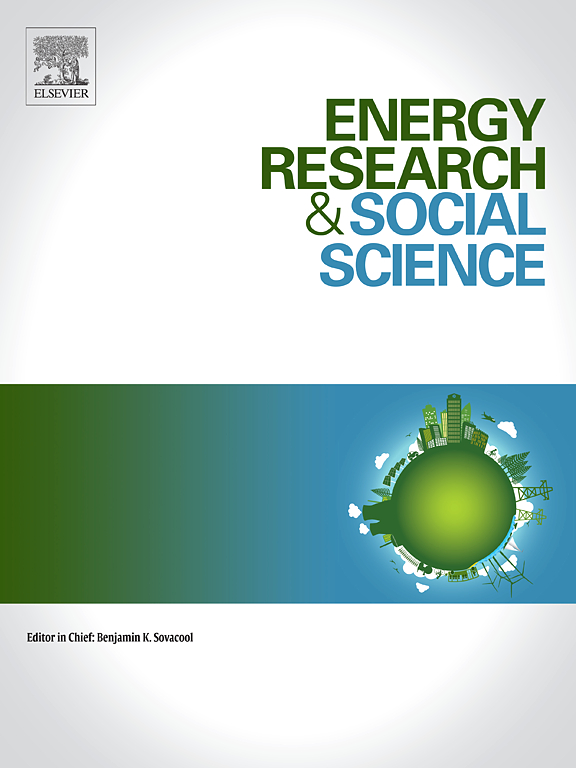Exploring beyond-compliance behaviors of Australian building practitioners: A cluster analysis
IF 6.9
2区 经济学
Q1 ENVIRONMENTAL STUDIES
引用次数: 0
Abstract
To meet Australia's 2030 goal of a zero-energy and carbon-ready residential building industry, new homes must attain high-performance ratings that are beyond-compliance. However, recent Nationwide House Energy Rating Scheme (NatHERS) data shows that most new residential projects in Victoria (Australia) were designed to meet only the minimum compliance level, without going beyond-compliance. Apart from the commonly examined reasons related to clients and policymakers, an underexplored aspect is the diverse behaviors of building practitioners during the compliance process. To effectively motivate different building practitioners to achieve beyond-compliance outcomes, a fundamental yet unanswered question is: how to segment building practitioners based on behavior constructs. To fill this gap, the study conducts a cluster analysis to explore segments of building practitioners with different beyond-compliance behaviors. Data were collected from a questionnaire survey of 73 residential building practitioners in Victoria, including architects/draftspersons, builders, and thermal performance assessors. Victoria was selected because many new Victorian houses still fail to achieve beyond-compliance, highlighting the importance of exploration. Three clusters of building practitioners were identified: lingerer, characterized by low subjective norms, perceived behavioral control; close-follower, marked by high normative alignment but low attitudes; and leader, distinguished by strong attitudes, subjective norms. The most significant difference between clusters was the subjective norms driven by clients' requests. As the first clustering study to segment building practitioners based on beyond-compliance behaviors, the findings facilitate building practitioners to identify key areas for self-improvement, and also help policymakers develop tailored strategies to promote different segments of building practitioners to go beyond-compliance.
求助全文
约1分钟内获得全文
求助全文
来源期刊

Energy Research & Social Science
ENVIRONMENTAL STUDIES-
CiteScore
14.00
自引率
16.40%
发文量
441
审稿时长
55 days
期刊介绍:
Energy Research & Social Science (ERSS) is a peer-reviewed international journal that publishes original research and review articles examining the relationship between energy systems and society. ERSS covers a range of topics revolving around the intersection of energy technologies, fuels, and resources on one side and social processes and influences - including communities of energy users, people affected by energy production, social institutions, customs, traditions, behaviors, and policies - on the other. Put another way, ERSS investigates the social system surrounding energy technology and hardware. ERSS is relevant for energy practitioners, researchers interested in the social aspects of energy production or use, and policymakers.
Energy Research & Social Science (ERSS) provides an interdisciplinary forum to discuss how social and technical issues related to energy production and consumption interact. Energy production, distribution, and consumption all have both technical and human components, and the latter involves the human causes and consequences of energy-related activities and processes as well as social structures that shape how people interact with energy systems. Energy analysis, therefore, needs to look beyond the dimensions of technology and economics to include these social and human elements.
 求助内容:
求助内容: 应助结果提醒方式:
应助结果提醒方式:


